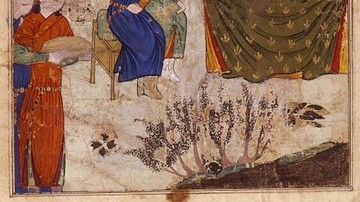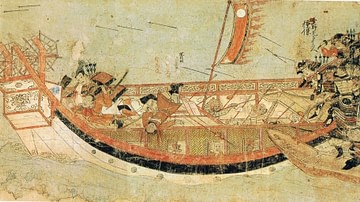Review

| Rating: | |
|---|---|
| Title: | The Horse: A Galloping History of Humanity |
| Author: | Timothy C. Winegard |
| Audience: | General Public |
| Difficulty: | Medium |
| Publisher: | E P Dutton |
| Published: | 2024 |
| Pages: | 519 |
Timothy Winegard’s "The Horse: A Galloping History of Humanity" is a sweeping study of the transformative role horses have played in shaping the course of human history. Beginning with their domestication in the grasslands of the Eurasian Steppe about 5,500 years ago, horses, argues the author, have “steered and dominated every part of our existence” and served as the “pinnacle instrument of profit and power.” This is a multifaceted work offering a 360-degree perspective of this unique animal.
Spread over 16 chapters, the author delves into how the horse played a key role across cultures and geographies changing the course of agriculture, warfare, transportation, travel, the rise and fall of empires, and even colonialism. According to the author, without the horse, the Silk Trade connecting the East and the West and serving as an economic lifeline for millions could not have happened. Nor could Alexander’s exploits across continents, the rise of the mighty Mongol Empire, and Cortez’s defeat of the mighty Aztecs have materialized.
A noted historian and the author of the New York Times best-selling work The Mosquito (2019), Winegard is currently an associate professor of history at Colorado Mesa University. He draws upon a wealth of research from diverse fields, including literature, genetics anthropology, archaeology, biology, and sociology, to craft a narrative that is as much authoritative as it is informative. Winegard’s discussion of the biology of the horses including their natural instincts, intelligence, and physical attributes, and how these attributes made them ideal partners for humans is compelling and insightful. The author’s discussion of the horse’s place in myth, art, and literature adds an extra valuable dimension to the narrative. The work also incorporates scores of photos and charts that serve as an important aid to the discussion and analysis.
Written in engaging language, this work should be of interest to diverse readers, including experts in animal studies, university students, and general readers interested in broadening their horizons. An extensive bibliography reflects the depth of research that went into the work. A surprising omission in the work is any reference to Michael Morpurgo’s fascinating novel War Horse (1982), which recounts the experiences of Joey, a horse bought by the British Army for service in World War I, serving as the basis for Steven Spielberg’s film adaptation of the work in 2011.
Even after the arrival of trains, planes, and automobiles, horses, as the author documents, continued to play an indispensable role in various areas including warfare. More than a million horses were deployed by the Allied forces alone during the First World War serving as indispensable transport horses towing artillery, armaments, rations, water, and any other conceivable articles of war.
Some of the merits of the book also serve as its weaknesses. The author could have delved more into analysis than presenting an overabundance of facts which many average readers might find overwhelming. The author also tends to over-romanticize the role of horses as if they were the sole forces in historical transformation. Lastly, the staggering costs and ethical dimensions of using horses in human pursuits are largely absent in this work while the author himself admits that the First World War was the “bloodiest conflict for horses in the history of warfare.”
Despite these limitations, this book is a major contribution to our understanding of the role of horses in effecting historical change. It is a valuable complement to other recent works in the field: Raiders, Rulers, and Traders: The Horse and the Rise of Empires (2024) by David Chaffetz, and Hoof Beats: How Horses Shaped Human History (2024) by William Taylor. All three works came out within only a few months, enriching and deepening our understanding of this unique and trail-blazing theme in human history.
About the Reviewer
Cite This Work
APA Style
Chaudhuri, S. (2025, January 09). The Horse: A Galloping History of Humanity. World History Encyclopedia. Retrieved from https://www.worldhistory.org/review/510/the-horse-a-galloping-history-of-humanity/
Chicago Style
Chaudhuri, Shankar. "The Horse: A Galloping History of Humanity." World History Encyclopedia. Last modified January 09, 2025. https://www.worldhistory.org/review/510/the-horse-a-galloping-history-of-humanity/.
MLA Style
Chaudhuri, Shankar. "The Horse: A Galloping History of Humanity." World History Encyclopedia. World History Encyclopedia, 09 Jan 2025, https://www.worldhistory.org/review/510/the-horse-a-galloping-history-of-humanity/. Web. 21 Apr 2025.




